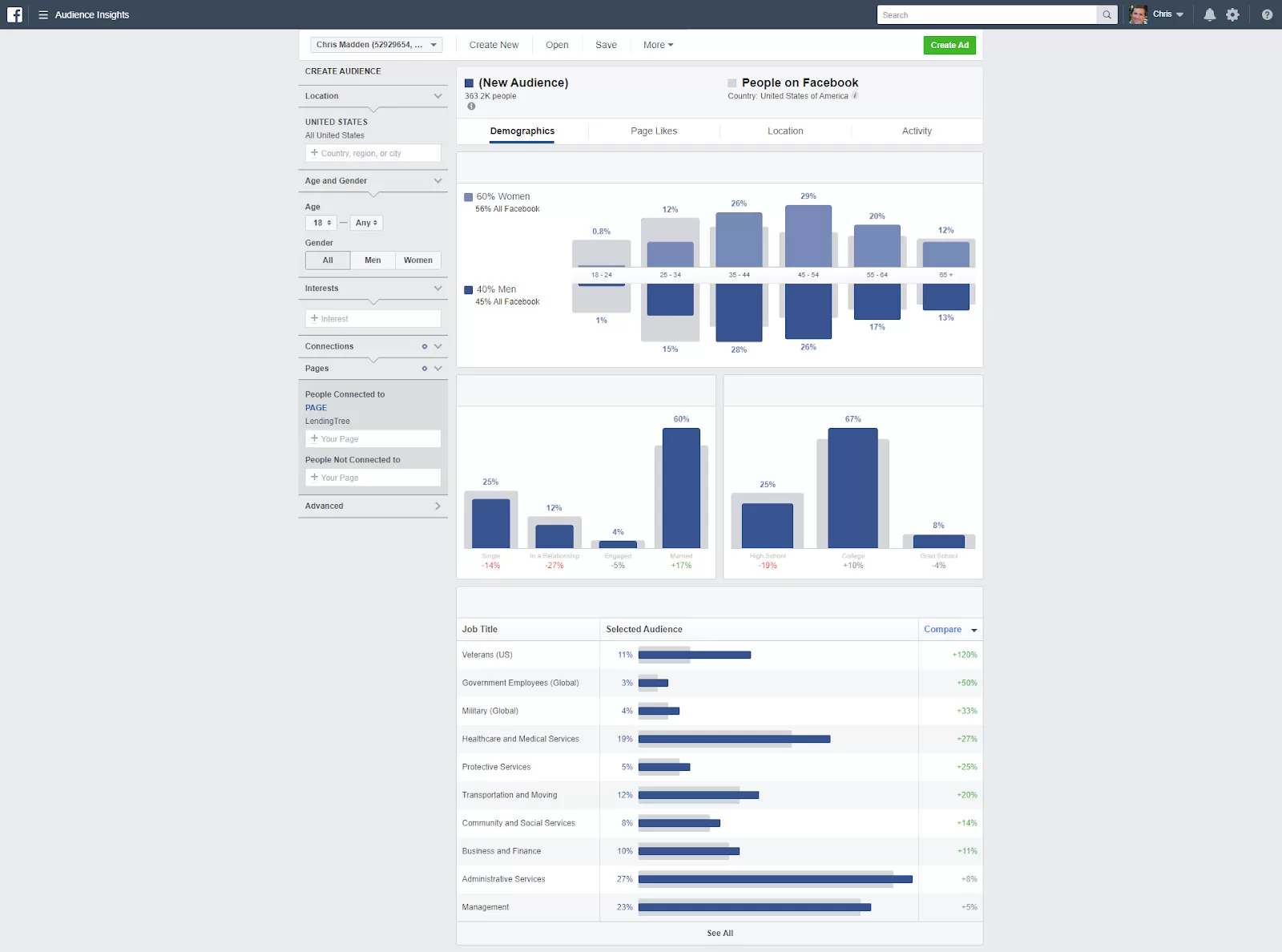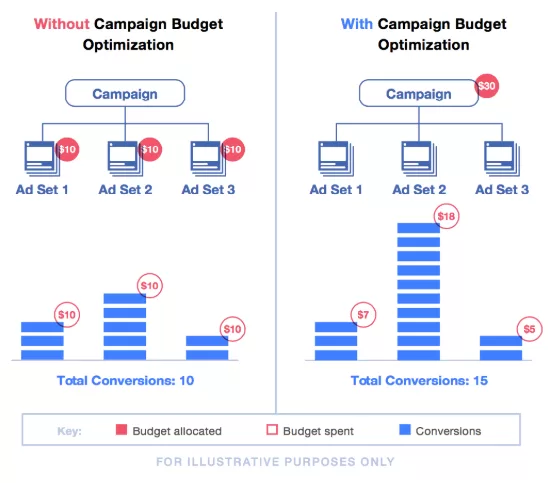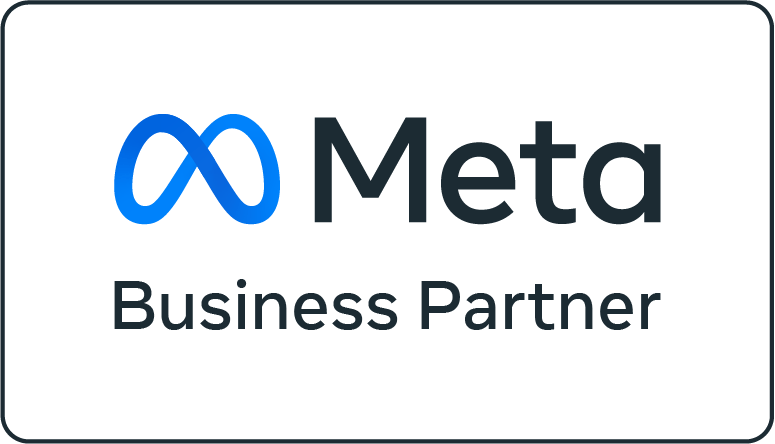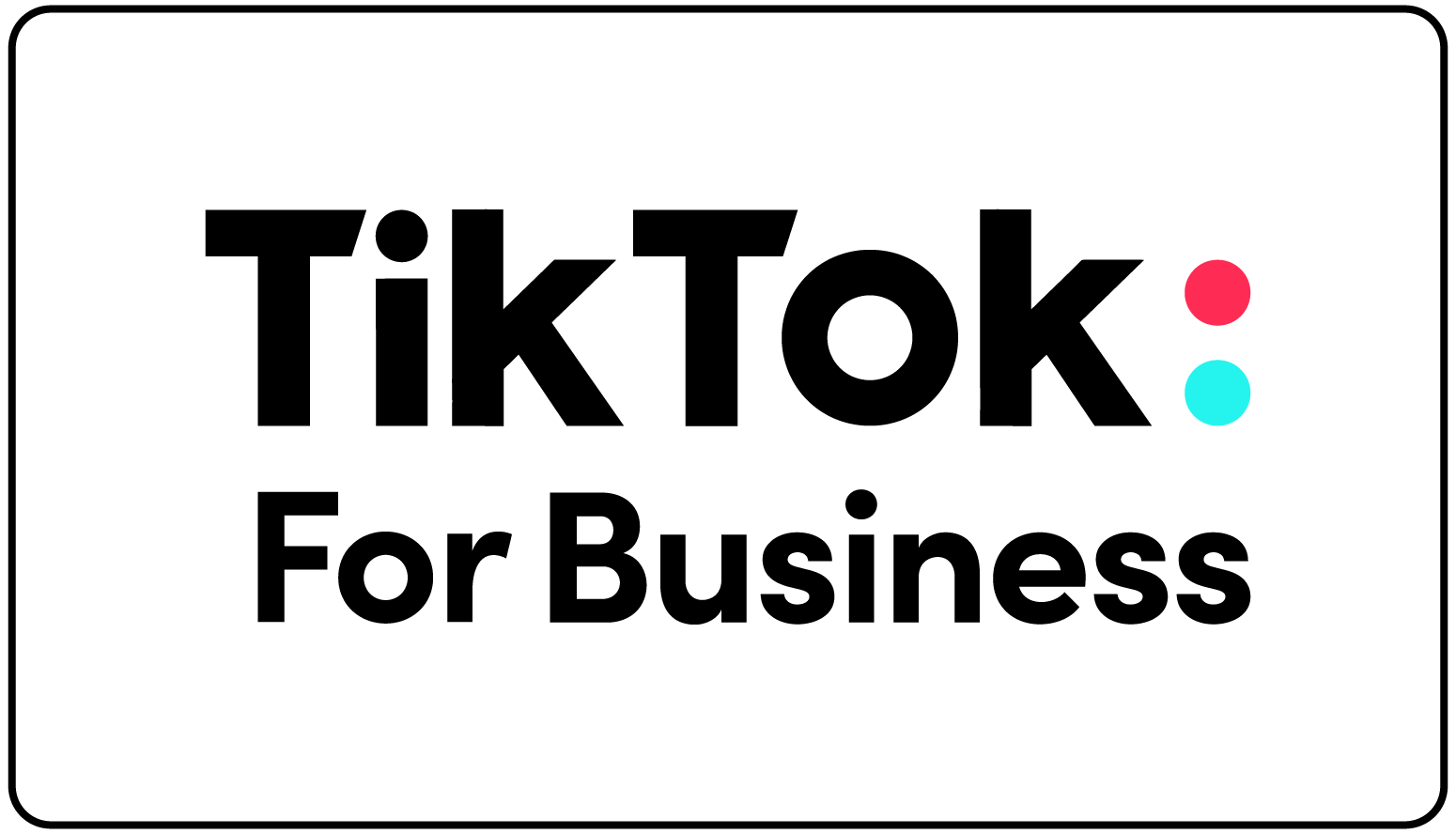Market Segmentation Using Facebook Audience Insights is one of the most important tools in any digital marketer’s toolbox. With the right data, it can net significant benefits and increases to ROI, while allowing you to build reliable mental models of your audience.
Segmentation is important when a much larger market is narrowed down into different, smaller groups. Those groups are known as segments and they can be combined, narrowed down further, and analyzed. Your goal is to craft effective messaging which resonates with each segment, either individually or collectively.
In order to make messaging work, businesses have to decide which segments they need to target. Marketers need to analyze classic audience segmentation concepts and find out how to execute market segmentation using Facebook Audience Insights.
What is Facebook Audience Insights?
Facebook Audience Insights is an incredibly powerful and necessary tool for any Facebook segmentation strategy. A wealth of data can be collected from Facebook and used to help fuel powerful future campaigns. It removes most of the guesswork out of first time targeting, leading to reduced CPA, better value cost-per-click, and higher ROI.
Using Audience Insights, marketers can aggregate data such as:
- Demographics. Age and gender, lifestyle, education, relationship status, job role, and household size
- Facebook page likes. The top pages that people like in different categories.
- Location and language. Where do people live, and what languages they speak.
- Facebook usage. How frequently are people logging onto Facebook and on what device?
- Purchase activity. What they bought in the past and how they are buying.
Facebook Audience Insights makes it easy to access data for two specific groups of people: People who follow or like your page and everyone on Facebook.

What is Geographic Market Segmentation?
Geographic Market Segmentation represents the segmentation of a market by country, region of the country, state, neighborhood, zip code, and other characteristics. This allows marketers to further hone their ad strategy and to create messaging that applies to the specifics of where consumers are located.
Within Facebook ads, you can target Geography by:
- Selecting cities, states, DMAs, or regions.
- Dropping a pin on a map and using a radius of 1 – 50 miles.
- Targeting by zip codes in the U.S.
- If targeting via a lookalike, geographic commonalities in the source list will be reflected in the resulting lookalike audiences.
Some financial and housing ads are subject to limited geographic targeting in order to prevent discrimination.
Facebook Ads and Machine Learning
Advertisers historically have been attracted to Facebook ads for granular targeting and seemingly limitless audience segmentation.
By 2019, the importance of machine learning in Facebook ads affected the practical applications of market segmentation. Machine learning can decide which of the market segments have the best chance of conversion based on what is being optimized.
While in the past we would create a lot of manual audiences to test, now via campaign budget optimization, we put different audiences into their own ad sets in the same campaign. This translates to generally non-overlapping ad sets with one very broad audience (ie untargeted) and then 1-3 very targeted audiences (1% lookalikes of buyers, for example). The algorithm then decides in which market segment the next dollar should be spent based on your campaign goals.
In early 2020, the Audience Insights tool still exists as a part of Facebook IQ, but its usefulness has diminished as you now can only see basic data about people who follow your page. Before 2017, you could upload any customer list and see much deeper demographic indexes around that list.
There are many ways Facebook’s various tools allow you to segment and learn about your market, including considering market segments in the traditional marketing sense.

Each of the above ad sets can be thought of as different, non-overlapping audiences. So you choose 1-3 very specific market segments and run it against a broad audience.
Using Facebook’s Geographic Audience Insights
One way to know customers well is knowing where they are located. In fact, geography is often the first step in creating any customer profile because it helps tell companies about lifestyles and likely product preferences.
Facebook Insights can expand geography to include more than just location. Climate-based segmentation, for example, can help companies market products that appeal to specific temperatures. Winter apparel will likely appeal to customers in regions that are cold more times of the year than not while swimwear should be targeted more to customers in warmer climates.
Another way to look at geography is population type, such as urban, suburban, and rural designations. Certain products will have special appeal depending on population density. Agricultural products will have greater success when marketed to consumers in rural areas and lawnmowers will best connect to suburban consumers, for example.
Companies that sell variations of a single product, such as bicycles, can segment their marketing according to different areas. Lightweight bikes will have special appeal to urban consumers, long-range bicycles may work best for consumers in suburban areas, while durable mountain bikes will appeal most to consumers in rural areas. In all of these examples, geography is used as an assessment of the wants, needs, and lifestyles of consumers living there, which inevitably helps marketers shape their messaging to fit those traits.
What is Demographic Market Segmentation?
Demographic segmentation refers to dividing the market into groups based on variables such as gender, age, income, occupation, family size, education, marital status, and ethnicity. Companies can identify trends that may be specific to demographics, which will then help them tailor their messaging to those audiences. Demographic examples are:
- Gender
- Age
- Income
- Family Size
- Occupation
- Education
- Marital Status
Improve Demographic Targeting with Facebook Audience Insights
It’s easy to target audience demographics using Facebook Audience Insights. Facebook has made it very simple to narrow down different characteristics such as age and gender, lifestyle, marital status, education level, and job title, which then helps brands tailor their messaging.
The Facebook Audience Insights tool allows brands to conduct an advanced search where they choose from these different characteristics. They can then narrow down the demographics further to seek out traits such as relationship status, home (home type, homeownership, home value), or market segments such as household composition (children in the home, empty nesters, young adults).
If you’re in charge of the Facebook Insights segmentation strategy for a hotel, then you might want to look at factors such as job title and hobbies to get a better grasp on what kind of guests visit your hotel. This can be combined with the “level of service” concept to identify and target audiences for whom your ads are relevant.
Other options may include collecting email addresses from past guests and uploading them to Facebook to then use audience insights to look for similarities between audience members which are the audience for your hotel. Users can then draw up information on lifestyle statistics, look at the types of Facebook pages they like, and examine other parts of their lives to use for targeting.
Let’s use a broader example and say you are looking to target people living in Chicago. You know the general age group we want to target, but you want to know more information about this group. What are they interested in?
After narrowing down the audience and looking at page likes, you can see a few themes start to emerge. Children are one, local services are another, and arts and entertainment a third. There are many more, and you can narrow down the audience further if needed.
What is Lifestyle Market Segmentation?
Lifestyle segmentation is defined by who the person is based on their activities, values, and beliefs. The process involves studying the personalities, feelings, thoughts, opinions, and values of consumers. In other words: How do they spend their leisure time? What kind of hobbies do they have? What is important to them? How do they see the world?
Examples of lifestyle traits may include:
- Homebody
- Art Enthusiast
- Sports fanatic
- Fashion-conscious
- Love for the outdoors
- Community-minded
These traits can also be identified by what a person writes in their profiles. For instance, a company can target potential customers by isolating certain terms such as “fitness” or “concerts” that may show up in their profile feed.
What is Benefit Market Segmentation with Facebook Audience Insights?
Benefit segmentation is all about seeking out the benefits a customer will have by buying your product or service. With Facebook Audience Insights, you are capable of discovering people who want to buy something because of a specific benefit the product will provide. For example, a shoe store may use benefit segmentation to target three kinds of runners: professionals, trail runners, and recreational runners. From there they may establish three separate marketing strategies that focus on three different products for each.
By dividing the market up based on the perceived value or benefit the customers believe they will receive help marketers tailor specific messaging based on those benefits. This ultimately helps businesses better understand their market and what customers want in accordance with their values and beliefs.
It also helps salespeople organize their leads — Now they can know how to talk with certain customers more effectively because they know what those customers are seeking in their products.
What is a Custom Audience?
Facebook’s Custom Audiences feature lets users connect with people who already have an existing relationship with their business – whether on Facebook, or other platforms. The tool gives them the ability to import user email addresses for retargeting on Facebook.
Essentially, Custom Audiences helps companies match contacts to their Facebook profiles and is most helpful for companies that are looking for an effective way to interact with targeted users across social media.
A major benefit of Custom Audiences is relevancy. Social media opens the door so marketers can see what consumers are doing in the present. Messages that are most relevant to those activities are those that are most likely to get a response. Marketers can also learn the last time users visited their website and at what frequency. They can even learn which users abandoned their shopping carts on the website and left without purchasing anything.
Custom Audiences gives marketers a second chance to reconnect with these users through different messaging. For obvious reasons the users are familiar with the website and products; By experimenting with new messaging, marketers now have a new opportunity to win those potential consumers back.
Custom Audiences also helps companies generate repeat businesses from their subscriber base. By examining purchase histories, companies can reach out to loyal customers to alert them to new upgrades to products they bought in the past.
Custom Audiences Based on Customer Files
Customer Files is great to use if you’ve been active in collecting data about your customers through your websites, in-store, or via another method. If you’re managing a hotel’s digital marketing, then you will likely already have access to a lot of this data. A huge benefit of this method is that leads generated this way tend to be more valuable to your business. Customers have already interacted with your business or organization, which means they are the type of people you want to target in the future.
You can even use this information to create audiences composed of your highest valued customers. Try targeting those who have visited your hotel more than once, or who are members of a rewards program you have set up. Once you’ve created your custom audience, you can narrow it down and examine it in the audience insights section. Try playing around with it to gain information that is specific to your business.
Custom Audiences Based on Website Traffic
Another option for market segmentation is to use your own website traffic. This is valuable because these people have already taken the time to visit your site and learn about how your offering can improve their lives.
A really powerful thing to do is to target people who have visited specific pages. You can go in a lot of directions with this based on where you believe the customer is in their buying process. You can even create multiple consumer segments for different sections of your site!
One recommendation would be to create a segment based on people who have visited pricing pages or who have added a product to their cart but didn’t finish the purchase. Sometimes delivering a message (or a special discount) to an audience segment of ‘almost buyers’ is necessary to give them a gentle nudge to finish what they started and complete their path to purchase.
Another option is to create an audience of people who haven’t visited in a certain amount of time. For longer purchase cycles, it’s helpful to stay on the mind of the consumer as they make their decision. So, create a segment of people who haven’t visited your site in 30 days and be sure to get back in front of them.
Do this by navigating to the create audience section and including those who have visited your site in the last 90 days (or longer or shorter, if you wish) and excluding those who have visited in the last 30 days. You can change any of these numbers to fit in with your advertising goal. Just make sure to include people who meet all of your criteria. You can even narrow that figure down to just those who are in the top 25 percent of your website traffic.
Custom Audiences by Engagement on Facebook
A custom audience is one that has engaged with your content on Facebook, such as video, a lead form, an event, and your Facebook page itself. This tool allows you to create targeted ads to this audience and to use it as a source for a Lookalike Audience, which you can learn more about in the next section.
Essentially, this is a way to create market segmentation based directly on how users are interacting with your content on Facebook, whether it be an ad, a video, or almost any other piece of content you post. When you create a Custom Audience, you create the time window of engagement (30 days? More?) and frequency of engagement.
What Are Lookalike Audiences?
Lookalike Audiences open up the playing field a little for marketers who are unsure who is actually engaging with their product or service. A Lookalike Audience is a way to reach new people who are likely to be interested in your business because they’re similar to your best existing customers.
Isolating Lookalike Audiences with Facebook Audience Insights
Lookalike Audiences are created by choosing a Custom Audience based on data pulled from fans of your Facebook page. From there you identify common qualities of those users; Facebook then sends your ad to an audience of people with similar traits — The “Lookalike” Audience, essentially.
How effective this tool depends on the size of the audience you’re looking for. Smaller audiences (ie a 1% lookalike) are most effective because it’s easier to create an exact match to your existing audience. However, larger audiences (ie a 5% or 10% lookalike) may have greater reach but their ability to match the source audience is less.
Facebook recommends basing your lookalike audience on a source audience between 1,000 to 50,000 people. Finally, Facebook also suggests that you draw from a source audience that represents your most loyal customers. Because why would you want to target potential customers who are less enthusiastic about the product or service you’re offering?

